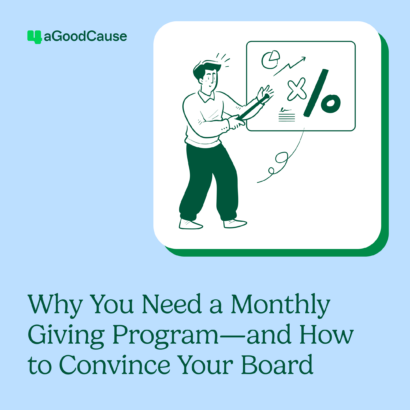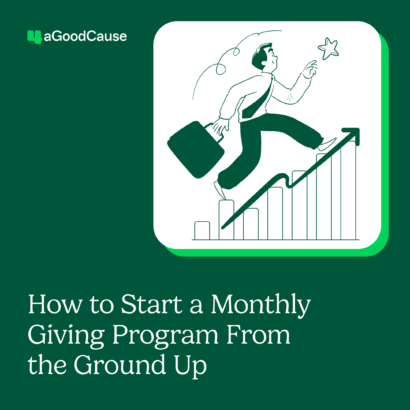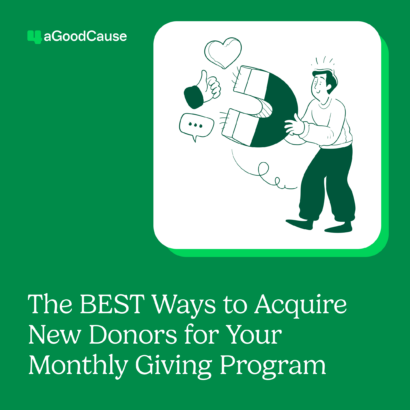Finding new donors is a big part of nonprofit marketing but an even larger part of what nonprofits do should be centered around donor retention—keeping the donors you already have. In previous posts, we’ve talked about various ways nonprofits can retain donors, specifically online donors, including by sending thank you emails, being active on social channels and providing other opportunities for donors to interact with the nonprofit.
To further explore ways nonprofits can increase their donor retention, we spoke with fundraising and donation expert Mary Cahalane of Hands On-Fundraising. Check out our interview below.
How important is it for nonprofits to build relationships with their online donors? Why?
Not important at all if the nonprofit doesn’t need donations. If you do need donations, then you need donors.
Now, if you have endless numbers of new donors rushing to your door, then maybe relationships aren’t important. But I think that’s improbable.
Most organizations need money, but they also need donors. That is, real people who have a passion for your mission. Your job is to nurture that passion. You do that by building a relationship. You do that by showing donors their gifts get something done (or make something stop).
Now, you’re not going to meet every donor for lunch on Thursday. In most cases, it’s not that kind of relationship you’ll build. But it’s still a relationship: based on trust, satisfaction, and even sometimes, surprises.
Should nonprofits approach the retention of their online donors differently than other donors? How so? How are these relationships different?
I think it’s really important not to overemphasize the channel. Donors are donors and how they choose to give shouldn’t drastically change how you treat them.
Whether you interact online, on paper or in person is secondary to the quality of those interactions.
If you prioritize the money part of fundraising, you risk losing your donors. How they give – online or off – is less important than why they give. That’s the question you really want the answer to!
Respect donors’ preferences, of course. If they’ve told you “no mail, please, I prefer email” then that’s how you communicate. But I wouldn’t assume that because someone has given online they’re wedded to that means of communication. The best way to know? Ask them!
Donors who have chosen more than one channel – people who give through the mail and online, or have given you both their email address and their mailing address – tend to be more loyal. Makes sense, right? They want to be in touch!
How does the online donation process impact donor retention?
When you look at the donation process, that’s where online giving has its own needs.
From the nonprofit’s side, you’re trying to maximize the chance that donors begin the donation process (by seeing a way to donate on your website or being led there) and then complete the process. You’ll worry about making it obvious that you need donations, making it easy to find the donation form, making the form easy to fill in (as little information as you can get by with helps).
From the donor’s side of things, ease is important. Trust is important. And most of all, the emotional experience of giving is important.
Be wary of thinking about donations in a transactional way. Giving isn’t a transaction – it’s a gift, made from the heart.
That doesn’t mean you shouldn’t pay attention to your process. You should. And you should solicit donor feedback so you can always improve your online process. That’s the great thing about online: it’s easy to get feedback!
And remember that the process doesn’t end with the gift. How great is your automated thank you? How great is the thank you that goes out after that?
Are you staying in touch to let your new donor know her donations made a difference? Are you making him feel he made a great choice when he decided to give?
Yes, a lot about online giving can be automated. But don’t try to automate donor relationships – tools are great, but use them in the service of building stronger relationships.
What prompts an online donor to give again and how can nonprofits tap into that?
Great service. Strong, emotional thanks. Good information about the impact of their gift. Doing what you say you will do with their gift and demonstrating that.
Whether someone has given $5 or $500, they want to know their gift matters. We can use great communication to show them that. We can use it to build relationships that continue.
Something often overlooked is the role of great customer service. Yes, emotion matters – and you need to communicate that well. But just plain making it easy for donors – having a human to answer a question, showing you do what you say, asking if the process was easy… little things add up.
What steps do you suggest nonprofits take in creating a higher donor retention rate?
Roger Craver, in Retention Fundraising, offers 32 key drivers of donor commitment. (Based on a DonorVoice study.) These drivers center around the donor’s experience. Is your organization seen as effective? Do your donors feel needed, appreciated and well-treated? Do they trust you?
To me, those things are about treating donors like people, not ATMs. And about an organization that values donors and behaves with integrity.
I worked with an organization that had great donor retention years ago. Donors stuck with the organization through the worst of the great recession. I believe it’s because they felt personally connected: to the mission, to the organization – and to the CEO. They felt like they mattered and were achieving something meaningful.
But on a truly practical level, one important step is measuring retention. You do what you measure. So make retention something you track. Better yet, make it something you use to evaluate your staff. (And not only fundraising staff.)
What things could nonprofits be missing that could work to increase their retention of online donors?
Everyone agrees retention is important. But too often, it’s not important enough to prioritize. Chasing new donors is more exciting, I guess. Retention is more about the day to day things you do. Those things might seem boring. But consider how much more money your organization will have if you keep your donors around.
So, as I mentioned above, start by knowing what your retention rate is. Then set goals and measure progress!
What types of mistakes do nonprofits make that could be hindering donor retention? How can they work to reverse these mistakes?
Ignoring retention. Evaluating fundraising efforts and not making retention a key metric. Not expecting that donor loyalty is everyone’s job.
Also, not recognizing loyal donors. That could mean something as small as a system that allows you to welcome back a donor making a second (or third…) gift.
It means communication that recognizes a returning donor’s status. Do that in thanks, in reporting, in any recognition efforts. Organizations often send welcome letters or packs to new donors, hoping to cement the relationship. How many send letters to recognize loyal giving?
Also: not seeking feedback. The people who know best what donors want are donors. Set up ways to gather feedback on your site. Send surveys. Call donors. Partners talk to each other.



